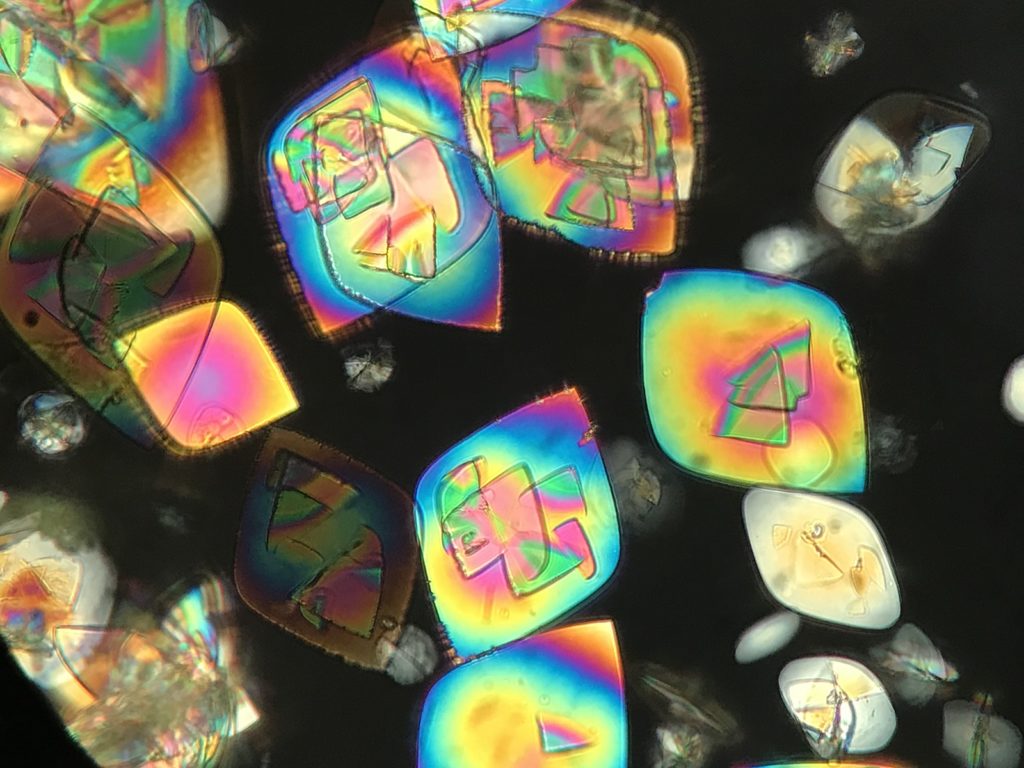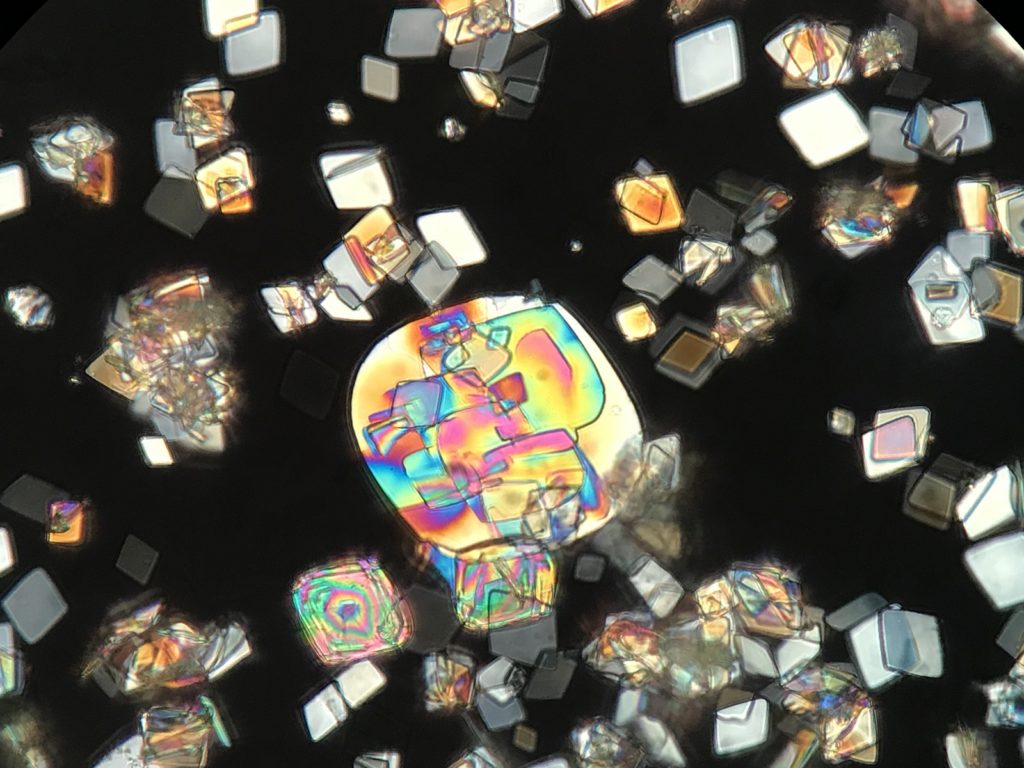An interview with a professor passionate about clinical microscopy of urine sediments
You might have seen the beautiful urinalysis imaging of Dr. José Antonio Tesser Poloni on his Twitter feed.
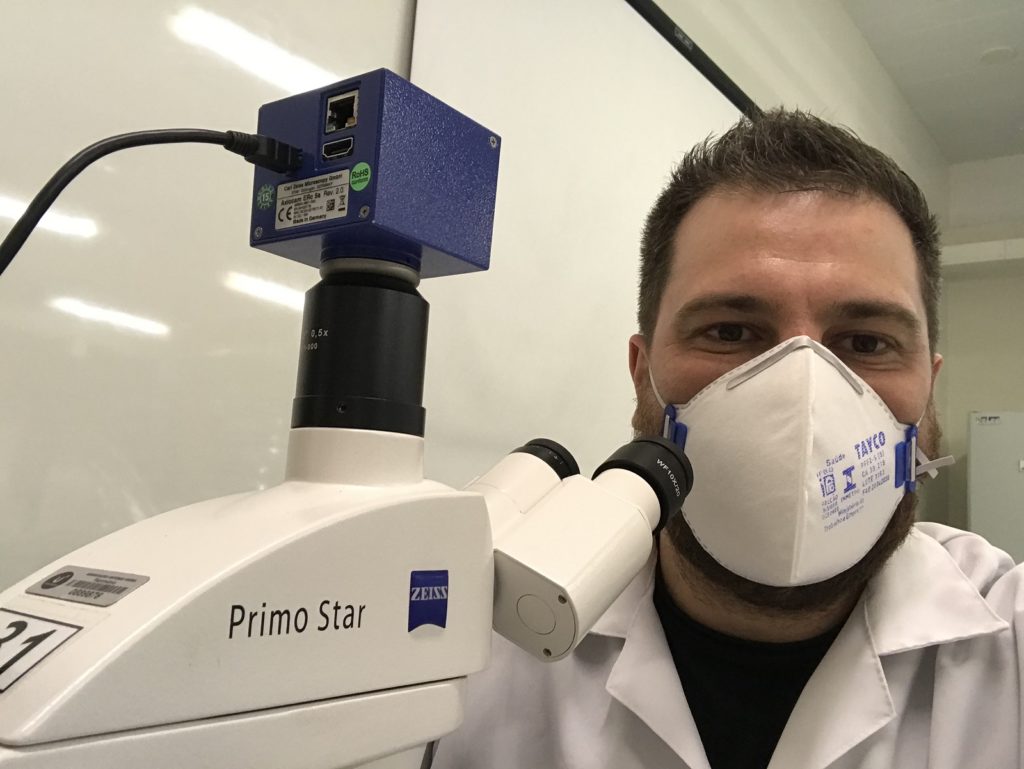
Dr. Poloni is well established in the field of urinalysis. He is a professor of laboratory medicine specializing in disciplines related to clinical microscopy, such as urinalysis and clinical parasitology, at Universidade do Vale do Rio dos Sinos (UNISINOS), São Leopoldo-Brazil. Additionally, he is a consultant for the External Quality Assessment Program on Urinalysis at Controllab, Rio de Janeiro-Brazil.
We were delighted with Dr. Poloni’s beautiful microscopy images posted on social media and spoke with him about his work.
Please describe your daily work and how you are currently using microscopes.
I give classes at the university related to clinical microscopy. We use microscopes in our classes to teach about the structures that have clinical relevance and also how to correctly perform clinical analysis evaluations.
I have extensive experience in urinalysis from my work at the Laboratório de Análises Clínicas Carlos Franco Voegeli at Santa Casa de Misericórdia de Porto Alegre. I worked daily performing urine sediment microscopy of samples from patients with a wide variety of clinical conditions, including a large number of samples from kidney allograft recipients and from patients with severe kidney diseases. This work was extremely interesting and also challenging due to the frequency of finding unusual structures, some of which have never previously been reported. My use of phase contrast and polarized light filters was very helpful as these are the gold standard resources to properly identify particles of clinical interest like dysmorphic erythrocytes, urinary casts, lipid droplets and urinary crystals.
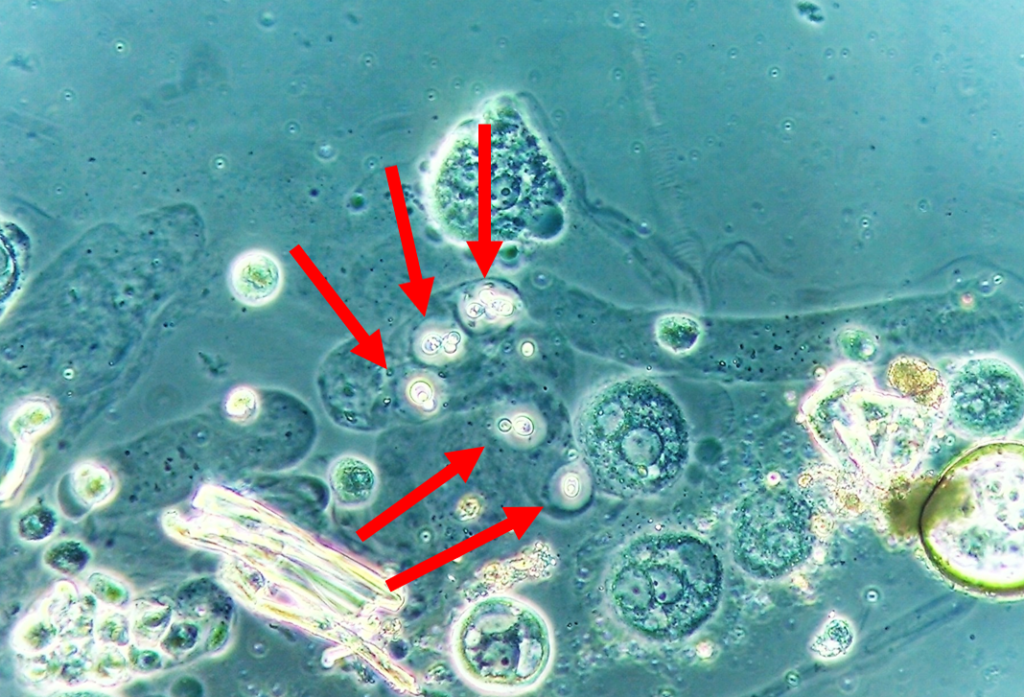
Cryptococcus spp. encapsuled yeasts entrapped within the proteinaceous matrix of the cast observed in the urine sediment imaged with phase contrast microscopy, original magnification 400x.
How did you become interested in urinalysis?
My dream as a child was to own a microscope. I never had the chance to buy a microscope; but, I have worked years performing clinical microscopy and am now able to sit daily at a microscope and realize my childhood dream.
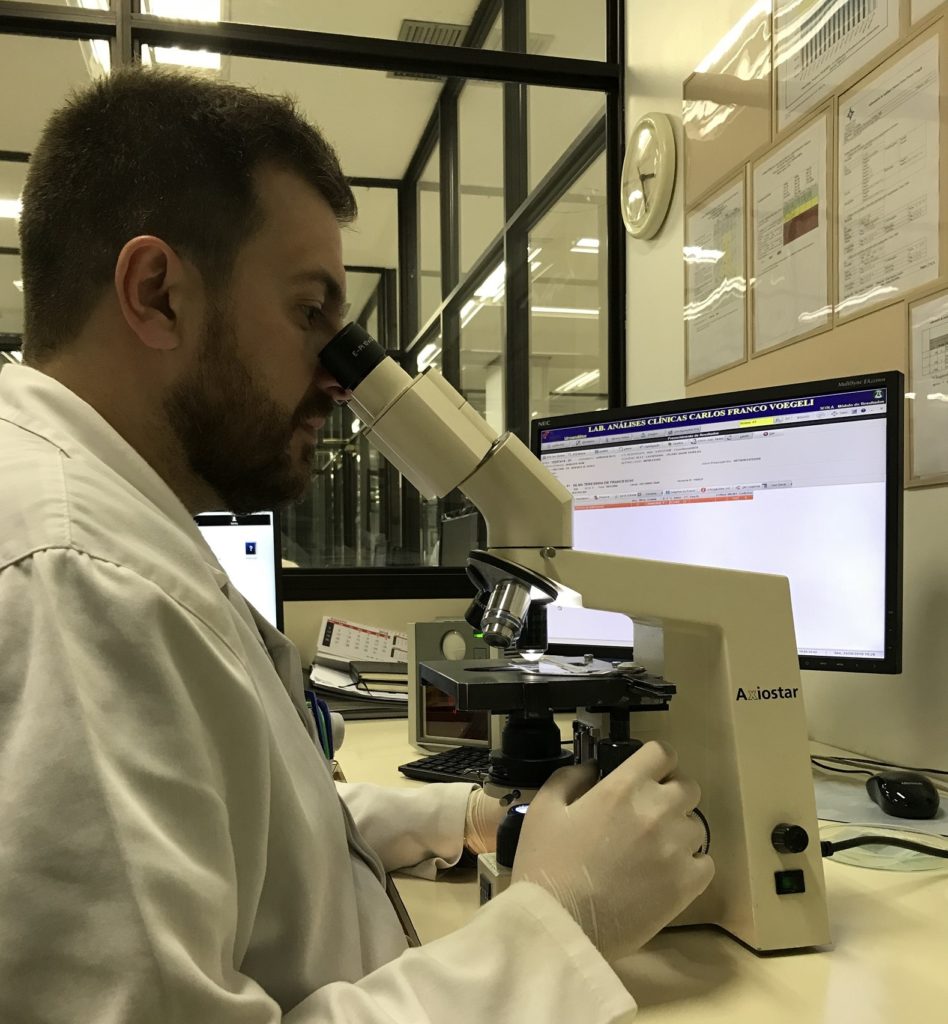
During my years of university study at Pontifícia Universidade Católica do Rio Grande do Sul (PUCRS) and Universidade Federal de Ciências da Saúde de Porto Alegre (UFCSPA), I loved anything related to microscopy, from hematology to parasitology. I remember vividly the first time I observed a urine sample on the microscope and I saw a beautiful erythrocyte in movement. I could clearly, for the first time, understand the biconcave morphology of this cell. In the blood slides, they are stained and immobile, much different from the real morphology. During urine sediment analysis, I observed that incredible structure in full detail! It was an amazing experience to me.
After I graduated, I performed a trainee internship at Santa Casa and I loved the amount of structures that could be observed in the urinalysis section. These are the key moments I have in mind that directed me to be interested in urinalysis.
Do you remember the first time you imaged urine crystals?
Crystals in urine are a relatively common finding; for example, calcium oxalate bi-hydrated crystals are commonly seen and I remember observing them during my classes at university. Crystals in urine sediment have a wide variety of forms and composition and can have clinical significance.
But, there is something very special about crystals in urine sediment when you observe their characteristics under polarized light! It’s a totally different experience. I remember when I requested and the laboratory acquired both the phase contrast and the polarized light filters to improve the quality of the work we were performing. Some crystals under polarized light (like uric acid crystals, for example) have a strong and beautiful polychromatic birefringence that completely catches the attention to anyone that has the chance to observe it. The use of these filters, besides contributing to the quality of the work, can also attract the attention of professionals and students. It is a really nice tool to use on the microscope!
Uric acid crystals in urine sediment seen under polarized light microscopy, original magnification 400x.
In your years performing urinalysis, was there any moment that stands out as particularly memorable?
In fact, there are many memorable moments during my career with urinalysis. Regarding one impressive urinary finding, I had the chance to identify Trypanosoma cruzi trypomastigotes (a parasite from the blood and tissues) in the urine sediment of a kidney allograft recipient. I made photos and videos of the parasite in the urine sediment and the case report was published in Kidney International. Until today, this is a unique report in the medical literature on Trypanosoma cruzi trypomastigotes in the urine sediment. I am sure this remarkable moment was only possible due to the use of phase contrast filters. As the parasite is extremely small and thin and the urine sediment is unstained, I was able to find it only because of the phase contrast revealing the presence of the parasite in movement on the slide. With bright field only, it was almost impossible to see the parasite on the sample.
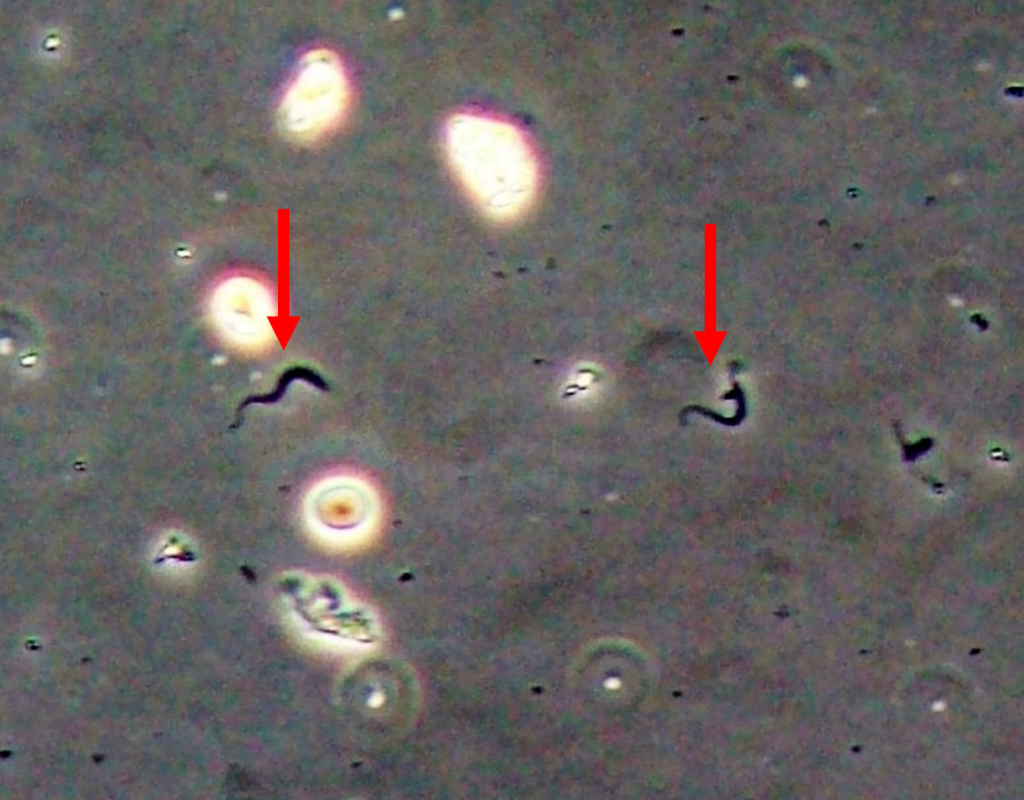
Trypanosoma cruzi trypomastigotes in the urine sediment imaged with phase contrast microscopy, original magnification 400x.
Do you have any advice for those who wish to enter your field of work?
Clinical microscopy, specifically urine sediment microscopy, is a very interesting field of work. We can contribute a lot in the diagnosis of diseases from the kidneys and the urinary tract. My advice for those who understand that they are interested in microscopy is to dedicate themselves to the maximum level possible. First, identify what do you like to do – I knew microscopy would make me happy since my childhood – after that, find what subject within the microscopic world interests you and then, dive in and learn everything you can! I discovered urine microscopy at my university but it was only in the laboratory working with the microscope that I really found my passion. I believe you only do your best if you work with something you love and I love urinalysis!






